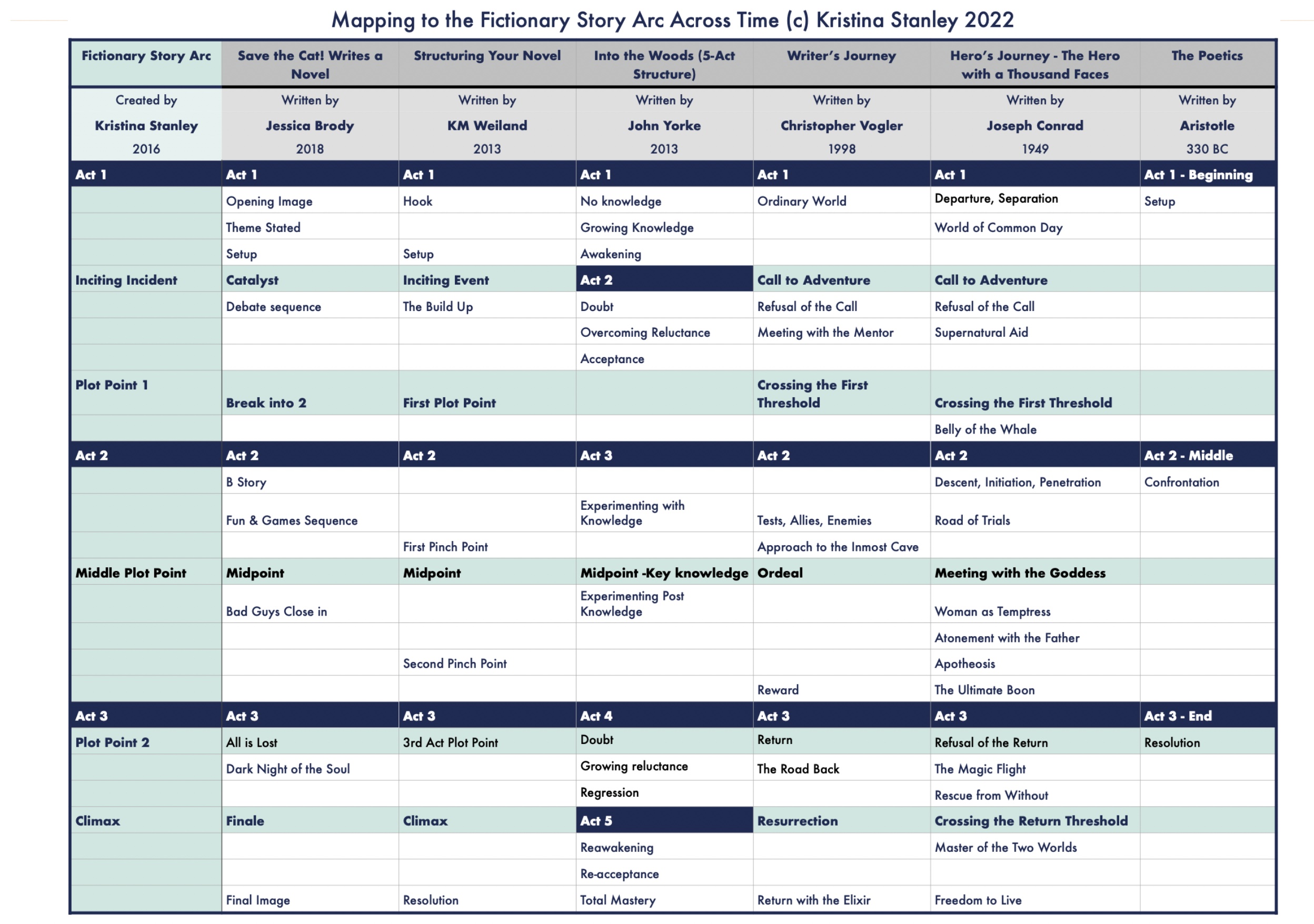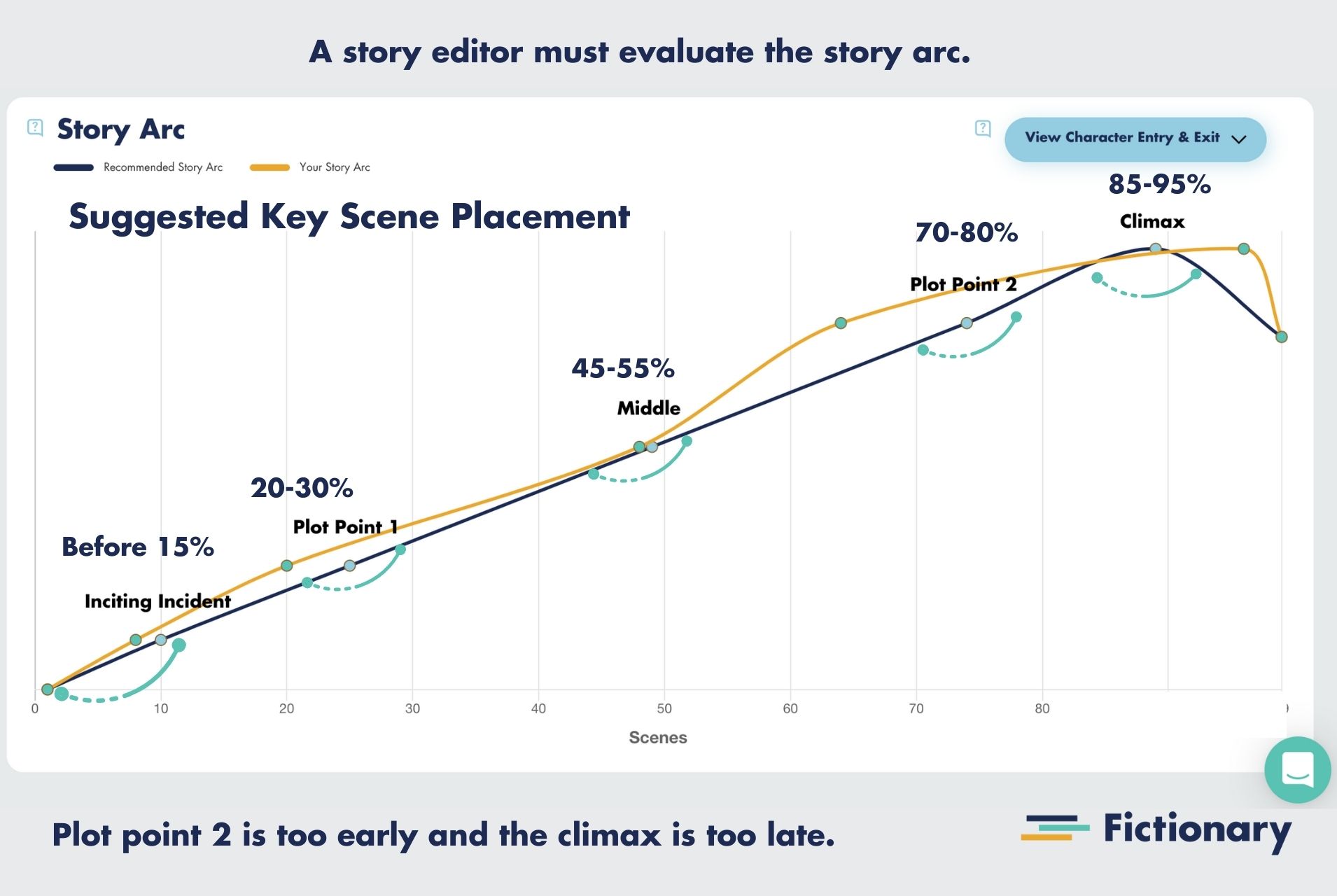
Plot, Plot Points, and Everything In Between. We’re going to cover the 5 main plot elements of a story.
“What is a “plot point”, or even a plot for that matter? And what the heck is the three-act story structure? Why should I care?”
I hear you! I’ve written before about the whole new vocabulary that comes with creative writing. There are a lot of terms that come with entering the world of storytelling, and it can all be rather mind-boggling.
The 5 Elements of Plot
Let’s look at some of these terms and talk briefly about what goes into writing a story. (Entire sections of bookstores and libraries are devoted to “how to write a novel” books, so I obviously won’t be going to great depths here!)
Some of the terminology you may have heard about has to do with how an author writes the elements of a story around a structure of main “plot points”. These are often described in terms of a “three-act story structure.”
Let’s see if I can clarify things for you.
As Kristina Stanley wrote, “Plot is what happens. It is a series of events regardless of their order.” This is probably where you started when you wrote your story – this happened, then this happened, then that happened.
“Structure,” she goes on to say, “is the strategic sequence of events that elicits reader emotion.”
This is where those plot points come in.
If you lay out the scenes you wrote in a way that follows a subscribed pattern and placement, it connects with readers in a far more meaningful way than if you throw them together in an unstructured manner.
Plot Elements in Order
There are a few ways of looking at plot structure. Here is a table showing all the plot elements in order.

5 Elements of Plot Explained
Let’s look at the Fictionary structure of 5 plot points. It is the essence of the other plot structures boiled down to the most essential beats. I’ve written on the five main plot points here; what follows is a quick summary.
The inciting Incident
A story starts with the main character, the protagonist, in their everyday world. They probably are somewhat unsatisfied here, and readers get to see how they are living with their circumstances. Somewhere in the first 10-15% of the story, something happens. This may be a choice the protagonist makes, or it may be something done to them, but whatever it is will set them off on a journey that will change their world and change who they are.
Plot Point 1
The point of no return. There is a compelling reason that the protagonist must fully enter the journey, and there is no going back. This happens 20-30% of the way through the story.
Middle Plot Point
The protagonist is half-way through their journey. So far, they have reacted to the things that have happened along the way; now they become proactive, re-engaging with the conflict. This happens, unsurprisingly, at 45-55% of the way through the novel.
Plot Point 2
This is the low point for the protagonist. All seems lost; they realize that everything they have been doing until this point hasn’t worked because they themselves need to change. They must confront their inner fears and conflicts to find the way to move forward.
The Climax
The climax of the story is the culmination of all the conflict that has come before. Masterclass writes “the climax of a story is a dramatic turning point in a narrative—a pivotal moment at the peak of the story arc that pits the protagonist against an opposing force in order to resolve the main conflict once and for all.” (Emphasis mine.) The climax should fall 85-95% of the way through the story.
5 Plot Elements in The Three-Act Structure
Let’s look at that in relation to the three-act structure, and what goes around those plot points.
This is how it looks on the story arc with the 5 plot elements of a story:

Act 1
Act 1, which is the first 25% of the novel, starts with the setup of your main character (MC) in their “normal” world. This is, as Jessica Brody writes in Save the Cat! Writes a Novel, “a ‘before’ snapshot of your hero and their world.”
About 10-15% of the way through the story, there is the inciting incident, kicking off the protagonist’s journey through the plot.
Act 1 ends 20-30% of the way into your story with plot point 2, where your MC engages with the conflict or risks dire consequences.
Act 2
Act 2, covering the next 50% of the book, shows the rising conflict for the MC. They’ve entered a new world, literally or figuratively, and they are reacting to it based on their usual way of thinking (which served them, for better or worse, in the status-quo world of Act 1.)
At the midpoint, (45-55%), the protagonist realizes if they are going to accomplish the goal of the story (win/survive/catch the murderer/get the guy/etc.) they will need to be proactive in their actions.
This leads to the end of act 2, plot point 2, where the MC is facing their ’dark night of the soul’, realizing all of their efforts have been unsuccessful until now. They finally figure out how they need to change, what they really need, to accomplish the goal of the story. Jessica Brody calls this ‘the “aha!” moment.’
Act 3
In Act 3, the last quarter of the story, the MC takes their newfound knowledge and uses it in the rising action heading to the climax, which occurs 85-95% of the way through the novel. This is where the MC wins/survives/catches the murderer/gets the guy (or doesn’t do any of those things, depending on the genre you are writing in!)
After the climax, there will be a denoument, a resolution, showing your character in their “new normal” after their transformation over the course of the story.
“Okay, Kara,” I hear you say. “This is all a little overwhelming. How can I keep track of all these things, and improve my plot?”
Glad you asked!
As an editor, I can’t imagine trying to keep track of all these things without a tool like Fictionary StoryTeller. Kristina Stanley writes about it in this blog on structural editing.
Having a look at how your story’s plot points show on the story arc is an ideal way to see how your novel compares to the ideal. This is an objective way to analyze what scenes need to be moved around (or, gulp, deleted!) to serve the story.
Doing a scene-by-scene edit of your manuscript helps you analyze your plot (as well as your characters and setting) to make sure you have all the elements you need, and you can see where there are things you should put aside for another time.
Hopefully by this point you’re nodding your head and thinking, “That clarifies things! Where can I learn more?”
The Fictionary Community
Come join the Fictionary online community! It’s free, it’s for editors and writers, and there are lots of opportunities to ask questions and attend online teaching events. You can sign up here.


